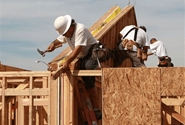Analysis

May 19, 2020
Housing Data Plummets in April, But HMI Shows Market Confidence
Written by Sandy Williams
Housing starts plummeted 30.2 percent in April compared to March, falling to a seasonally adjusted annual rate of 891,000 and the lowest level since 2015. Compared to April 2019, starts tumbled 27.9 percent, said the U.S. Census Bureau and the Department of Housing and Urban Development.
Building permit authorizations were at a SAAR of 1,074,000, a 20.8 percent decline from March and 19.2 percent below the year-ago rate.
“Housing starts retreated in April due to the economic consequences of government-imposed lockdowns associated with virus mitigation,” said Robert Dietz, chief economist at the National Association of Home Builders.
Single-family starts dropped 25.4 percent in April while permits fell 19.2 percent. Starts for housing of five units or more plunged 40.3 percent and permits 12.4 percent. Housing start declines were present across all four regions, falling the greatest in the Northeast (66 percent) and the West (42 percent).
Home construction was designated as an essential business by most states during the crisis, but supply disruptions impacted building activity.
“The designation of home construction as an essential business during the crisis helped keep most residential construction workers on the job, which is reflected in the May HMI,” said Dietz.
The May Home Builders/Wells Fargo Housing Market Index (HMI) indicated a renewed confidence by builders that the housing market was stabilizing and moving forward as the nation reopens from COVID-19 shutdowns. The HMI increased seven points to 37 in May, following a record monthly decline in April.
A number of measures were taken to ensure that buyers have access to information about new housing, including virtual tours and online closings. Low interest rates and recent increases in mortgage applications indicate buyer demand is improving, said Dietz.
“However, high unemployment and supply-side challenges including builder loan access and building material availability are near-term limiting factors,” he added.
NAHB is forecasting that multi-family construction will decline more than single-family construction during this recession.







